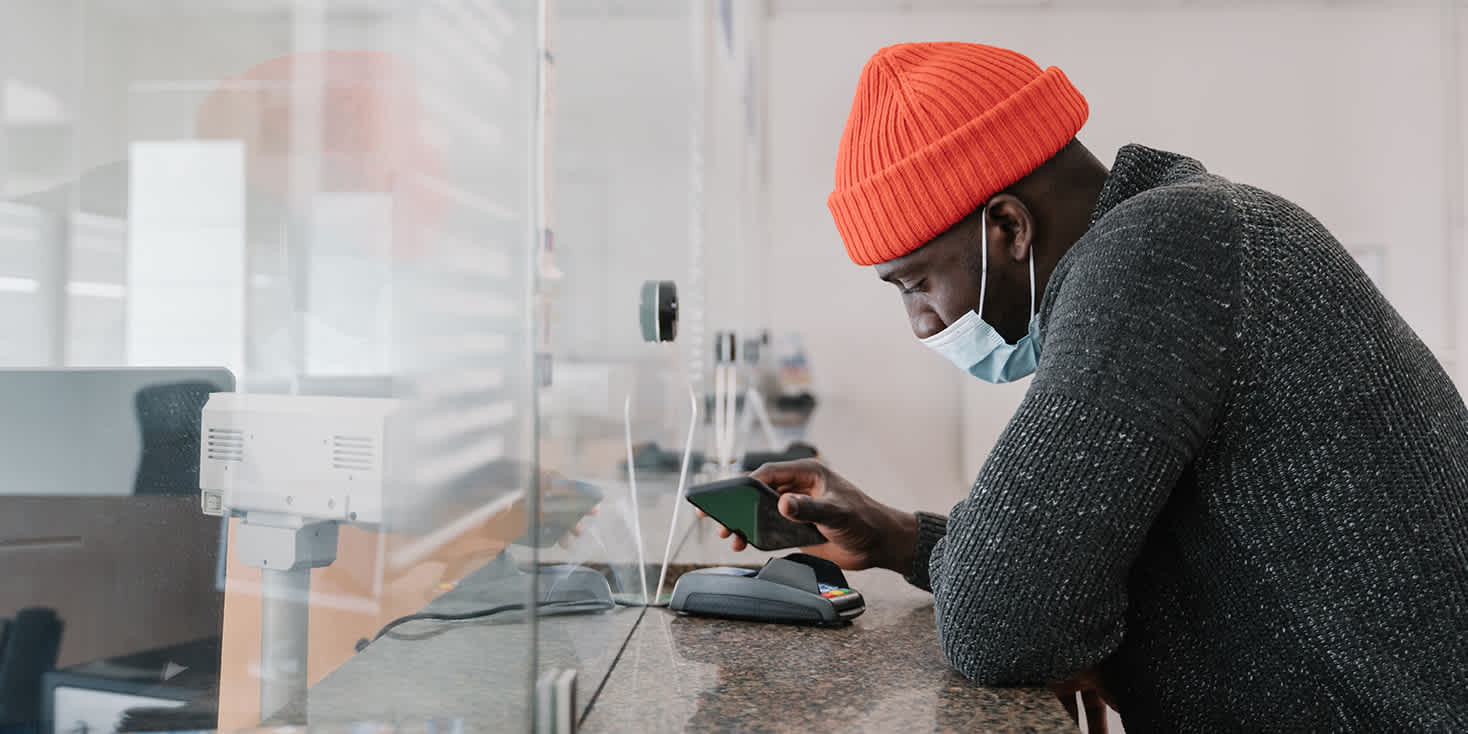
Contactless retail: 4 ways to cash in on this 2020 trend
The coronavirus pandemic has heightened awareness of parts of the shopping experience that we rarely thought twice about—interacting with a cashier or salesperson, handling cash, or even touching merchandise or a POS device. Today, these activities come with an increased risk.
In a survey conducted in late May, 59% of U.S. consumers said they are not yet comfortable returning to stores to buy nonessential items. Retailers are responding by accelerating their implementation of contactless transaction options.
Capitalize on these 4 strategies for contactless retail to help your business thrive this year.
1. E-commerce
The biggest example of the shift to contactless retail is the surge in online shopping that started in March. U.S. e-commerce sales jumped 49% in April, and eMarketer estimates the increase for all of 2020 will be 18%. That compares with an estimated 14% decline for brick-and-mortar retail sales this year.
Ready to try the buy now, pay later solution that delivers?
A large number of merchants have moved online, taking advantage of technology that’s ready to install from a variety of providers. Shopify, a leading e-commerce technology provider, reported a 71% jump in new stores created on its platform in the second quarter.
One such merchant, Great Lakes Brewing, transformed into a fully functioning e-commerce site in 2 days, enabling it to rehire staff that had been laid off due to the crisis. Peter Bulut, owner of the brewing company, said the move boosted sales 15% above pre-pandemic levels.
In addition to Shopify, platforms like BigCommerce, WooCommerce, and Magento can ease your transition to e-commerce. Our website displays a more comprehensive list, and this detailed guide from ecommerceCEO contains useful tips to consider if you’re making the transition from scratch.
“We believe the COVID pandemic has permanently accelerated the growth of online commerce, changing the retail landscape forever,” said Amy Shapero, Shopify CFO, during the company’s quarterly earnings call.
2. Contactless payments
The crisis is changing how people prefer to pay. A recent Paysafe survey found that 65% of U.S. consumers have tried a new form of payment when buying online during the crisis. The list includes mobile wallets, contactless cards, and installment payments. The survey also found a change in attitude—for example, 59% of shoppers say they feel better about using a contactless card than they did last year.
One item people aren’t reluctant to touch is their phone, and mobile-only transactions are becoming commonplace. More than half of U.S. consumers (59%) say they prefer the convenience of mobile payment apps like Apple Pay, Square Cash, and Venmo, according to the Paysafe survey. Adoption is strongest among young people, with 73% of people aged 25-34 saying they were likely to use payment apps on their phones, compared with 28% in the 55-64 age range. While there are many wallet apps available, Apple Pay drives 77% of mobile wallet transactions.
Another mobile-first, contactless payment option is Affirm, which has over 5 million users. Our customers like the budget-friendly option of spreading payments over time, and their buying activity drives higher sales volume for our retailer partners—up to an 85% lift in AOV and an 8% lift in conversion. During the pandemic we’ve also seen higher sales volume for merchants in categories like furniture, office equipment, and home fitness equipment as shoppers sought to make their extended time at home more comfortable.
3. Curbside pickup
For businesses with stores that remain open, curbside pickup has become a key strategy to engage shoppers while avoiding contact. Advantages include avoiding the checkout line and limiting contact with other shoppers.
In April an online survey of retailers from RIS News found that 44% were offering curbside pickup. Of the merchants not offering it, a third said they were “rushing to get the service up as soon as possible.”
If you’re considering offering curbside pickup, these resources can help guide you:
A list of questions to ask as you plan for curbside pickup
These programs can help implement curbside pickup
Your e-commerce platform may have guides for you, like these from Shopify, BigCommerce, and WooCommerce.
4. Self-checkout
Another contactless feature that can increase shopper confidence is self-checkout. Kiosks offering this feature have become common in grocery and convenience stores and, increasingly, in department stores like Target. An app that’s activated on a shopper’s phone, with a check-in feature like the system used in Amazon Go grocery stores, may be more preferable to shoppers today than touching an in-store device.
A large majority of shoppers (86%) are comfortable using self-checkout, according to a survey from Zebra Technologies. Also, 70% of millennials said self-checkout provides an improved customer experience.
Saving time is another benefit for shoppers using self-checkout. But it can also increase the risk of theft. If you’re considering self-checkout technology for your business, read these pros and cons that can help you plan.
As shoppers’ buying and payment preferences change, retailers that offer a range of contactless options stand to win more customers.
Learn more about how Affirm can increase sales for your business.




